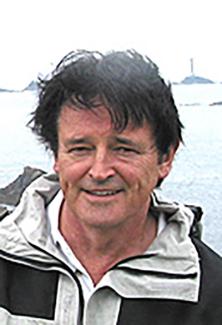
Distinguished Professor Emeritus
Education
PhD, Geography, Johns Hopkins University
BA, Geography, Cambridge University
Bio
Thomas Dunne conducts field and theoretical research in fluvial geomorphology and in the application of hydrology, sediment transport, and geomorphology to landscape management and hazard analysis. He has worked in many parts of the world, including Kenya, where he studied the effects of land use on hill-slope erosion and river-basin sedimentation, and how climate and hydrology affect long-term hill-slope evolution. At the University of Washington, he focused on land sliding and debris flows, as well as tephra erosion and debris-flow sedimentation resulting from the eruption of Mount St. Helens. The resource management issues he studied in the Pacific Northwest include the impacts of gravel harvesting on river channels and floodplains and the impacts of timber harvesting on erosion and sedimentation. Since coming to the Bren School in 1996, Professor Dunne has studied erosion in the Andes, and hydrology, sediment transport, and floodplain sedimentation in the Amazon River basin of Brazil and Bolivia and the Central Valley of California.
While working for the USDA Agricultural Research Service (1966-1969) and McGill University (1971-1973), he conducted research on the effects of topography, soil characteristics, and vegetation on runoff processes under rainfall and snowmelt in Vermont and Canada. While teaching at the University of Nairobi, Kenya (1969-1971), he initiated a long-running research interest in African environments, including experimental studies of runoff and erosion processes, and statistical studies and field surveys of the effects of land use on hillslope erosion and river-basin sediment yields. He continues to use data from the experimental studies to model sediment transport and hillslope evolution, one of his long-term research interests. He also conducted occasional studies of reservoir sedimentation, water quality, and erosion due to charcoal production and grazing. This work was supported by the Rockefeller, Guggenheim, and Beijer Foundations, the United Nations, National Science Foundation, and Kenya government agencies between 1969 and 1991.
While teaching in the Department of Geological Sciences at the University of Washington (1973-1995), he studied landsliding and debris flows; drainage-basin sediment budgets in natural and managed forests; tephra erosion and debris-flow sedimentation on active volcanoes; and sediment transport and channel morphology in sand-bed and gravel-bed river channels. He also conducted several studies related to resource management, such as the impacts of gravel harvesting on the river-channel sedimentation and morphology; impacts of timber harvest on erosion and sedimentation; and effects of flow diversion and reservoir management on sedimentation. The work was funded by NSF, and various state agencies (Dept of Ecology and of Natural Resources) and federal agencies (USFS, USGS, FEMA).
Since moving to California he has studied hydrology, sediment transport, and floodplain sedimentation in the mainstem Amazon River of Brazil and in the Andes Range and adjacent floodplains of eastern Bolivia. His work, funded by NSF and NASA, involved studies of runoff processes in forest and pastures, channel and bed material surveys, floodplain coring to measure rates of sediment accumulation with isotopes, measurement and interpretation of channel change and floodplain features from satellite images, and flow and sediment transport modeling in channels and floodplains. This work is now winding down. He and his students also study sediment transport, channel change and oxbow lake sedimentation along the Sacramento River and its floodplain. With five biologist colleagues in the Bren School and the California Department of Water Resources, he is now studying how physical and biological processes interact to create and maintain habitat for fish and their food sources in the Merced River, CA. Funds are provided by the California Bay-Delta Restoration Program.
He has gained experience with geomorphic and hydrologic processes through research and consultation in many parts of the world, and has expressed some of that experience in teaching courses, advising government agencies, publishing journal articles, and co-authoring two textbooks.